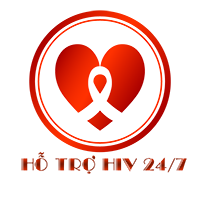Phòng Ngừa, Thuốc PEP
When to use HIV exposure medication (PEP)
When to use HIV exposure medication (PEP)
When using any medication, the user must comply with the treatment to achieve good results. For people at risk of HIV exposure. Compliance when using HIV exposure medication also helps people at risk of exposure prevent HIV. Preventing drug resistance and comprehensively maintaining patients’ health.
What is HIV exposure prophylaxis – PEP?
“Prophylaxis” means using medicine to prevent the onset of a disease. “Post-exposure prophylaxis” (PEP) means using anti-HIV drugs immediately after infection to prevent the onset of HIV. Anti-HIV drugs are used for about a month. PEP is not a cure for HIV/AIDS. This also does not bring 100% results. Various studies show that PEP can prevent 80%-90% of HIV onset.
When can HIV exposure medication – PEP be applied?
HIV exposure medication – PEP must be started immediately after exposure. Ideally, PEP should be taken before 72 hours after exposure to HIV.
Cases requiring the use of HIV exposure drugs
Stepping on a needle containing the blood of an HIV-infected person pierces the skin, causing bleeding. If it is a large hollow needle, it will contain a lot of blood. Deep punctures have a higher risk than small bore needles, which contain little blood and penetrate shallowly.
Deep skin damage caused by broken scalpels or test tubes containing blood and body fluids of HIV-infected people.
Blood and body fluids of HIV-infected people splash into damaged skin and mucous membrane areas. If the ulceration or erosion is extensive, the risk is higher and HIV exposure medication should be used immediately.
Unsafe sex.
To achieve high effectiveness when using HIV exposure prophylaxis. Users need to comply with the following principles:
Post-exposure prophylaxis should be initiated as soon as possible for all individuals at risk of HIV infection, ideally within 72 hours of exposure.
Use a daily three-drug regimen and 28 days of prophylaxis for all at-risk exposures. Discontinue medication when HIV-negative source of exposure is identified.
Take HIV exposure medication on time and in the prescribed dose
Medicines taken twice a day must be taken 12 hours apart. Medicines taken once a day must be taken 24 hours apart.
Failure to comply (i.e. doses are not taken regularly, in full, and on time) will result in low blood levels of the drug. Will create conditions for VR HIV to multiply, which can affect the preventive effect of the drug. And HIV mutations will be resistant to drugs, leading to failure of exposure prevention.
If you forget, remember to take the pill immediately. But there needs to be at least 4 hours between the next pill. And the next pill is still taken at the same time.
If you miss 2 or 3 days, you must take 1 pill as soon as you can take it (only take 1 pill at a time, do not take a missed dose). And drink as usual for 28 days. But it must be analyzed that doing so violates the rules of use.
People who are using HIV exposure medication – PEP must still comply. Apply measures to prevent transmitting HIV virus to others until the test is confirmed to be negative for HIV virus after 3 months.
Side effects are common when using HIV exposure drugs
Drugs that are toxic to the liver and kidneys: Some drugs cause damage to liver cells and increase liver enzymes. If liver enzymes increase 5 times normal, stop using the drug.
Headache: If you have a headache when taking the medicine. You can use common pain relievers such as Paracetamol.
Nausea: Can take medicine during or immediately after eating. If this phenomenon is severe, you can take antiemetics 30 minutes before taking exposure prophylaxis.
Diarrhea: When you have diarrhea, you need to drink Oresol to replenish water and electricity. If diarrhea is severe, intravenous fluids and anti-diarrheal medication are needed for temporary relief.
Abdominal pain, abdominal discomfort: Monitor carefully, if abdominal pain is continuous or prolonged, go to a medical facility where medication is provided for treatment. It may even be necessary to substitute another medication if necessary.
Rash, itching: These are signs of an allergy.
+ If the allergy is mild: scattered erythema with simple itching, you can take antihistamines.
+ Severe: rash, itching, difficulty breathing… can be life-threatening. It is necessary to immediately stop taking the drug and receive intensive treatment at qualified medical centers.
Dizziness and vertigo: Some ARV drugs have the effect of inhibiting the bone marrow, causing the bone marrow to reduce its ability to produce red blood cells, causing anemia. You can supplement Vitamin B12, iron tablets or Folic acid to improve this condition.
Sleep disorders, difficulty sleeping, nightmares: Should be used at night before going to bed. You can use sedatives and aids to sleep better.
Peripheral neuropathy: Symptoms of peripheral sensory disorders mainly in the extremities, walking may be difficult. You can use Vitamin B for support. If it is severe, you need to go to a medical facility where the medicine is provided to get support to replace the medicine.
Fat redistribution: Some HIV exposure drugs increase fat accumulation in the chest, abdomen, back, and nape, but cause atrophy of fatty tissue in the forearms, arms, legs, buttocks, and cheeks.
Exposure prophylaxis medications have many side effects, so while taking HIV exposure medications. If users see any unusual symptoms, they should immediately notify their doctor for instructions and appropriate treatment.
Any questions about HIV issues. Please call 0909000966 for HIV consultation, HIV testing consultation directly from experts.

